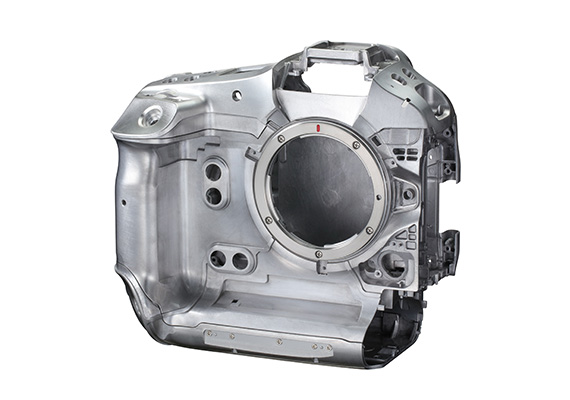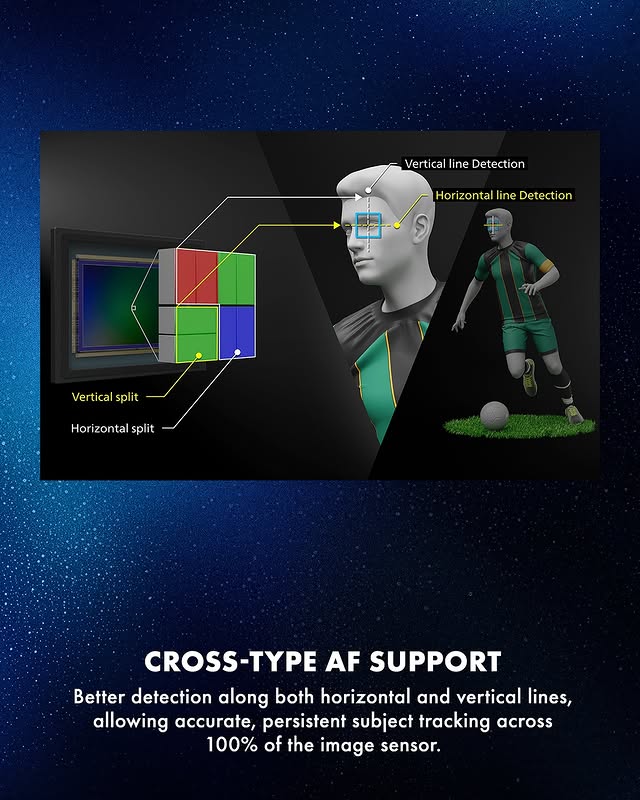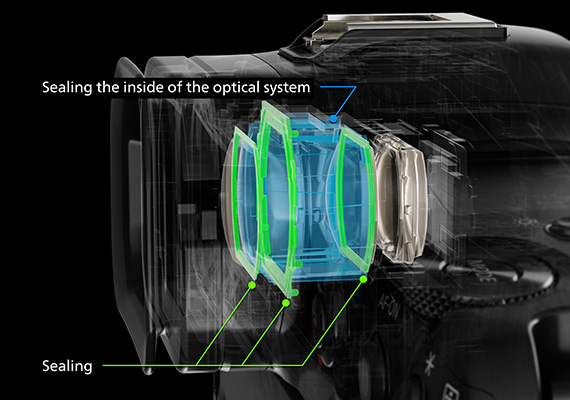Canon EOS R1 Review
It's not often we read PCMag for a review, but here we are. Since we jumped back over here after the EOS R1 came out, I'm also going to interject my own thoughts and write this up in a completely different style.
If you are in the market for an EOS R1, I'd strongly consider buying one before the tariffs hit. The price jump could very well be considerable and reach higher than 25% increase on the current price of $6299.
Purchase the EOS R1 Today
Don't forget to check out our Canon Camera Guide, which goes through the history of Canon's Digital Cameras
The EOS R1 is the successor to EOS-1D X Mark III, which Canon released as a flagship DSLR, and is taking on fast-paced, high-end mirrorless competitors like the Sony a1 II and Nikon Z9. As we know, the camera was built for “reliability and speed,” features a 24.2MP Stacked CMOS sensor, can shoot at 40fps, and has an advanced autofocus system.
Even though it is only a 24MP camera—competitors like the 45MP Nikon Z8 offer better resolution—the rapid readout of the sensor reduces rolling shutter, making the camera great for sports and other action shots. The review notes the rugged build quality and a variety of exciting features, including eye-control autofocus, but it wondered if the price makes sense for a camera with a more niche focus.
Construction and Handling
The EOS R1 has a magnesium alloy body that is fully weather-sealed. The PCMag article noted the “robust” build quality of the camera and that the battery and memory card compartment doors have good locks. Plus, it has backlit buttons, and a voice memo to annotate images. The specifications of the camera are 5.9 x 6.2 x 3.41, and it has a weight of 2.5 lbs. It is larger than a single-grip mirrorless camera, primarily due to the dual grips at the front for horizontal and vertical shooting. The nature of the design is advantageous particularly when using heavy, long telephoto lenses, which is typical of sports and wildlife photographers who may have long shoot days.

Users of the EOS-1D X Mark III and EOS R3 will recognize the controls. There are multiple customizable buttons, and the angled shutter release makes the camera fairly ergonomic. PCMag even praises the menu-driven reconfiguration options the EOS R1 provides to professionals who wish to adjust their controls based on their workflow. The review did not consider comfort, however. Depending on the photographer’s strength and size, the weight of the camera along with the dual grip may cause strain during longer shoot sessions.
Autofocus System
The R1 has an impressive autofocus system that PCMag calls Canon’s best system, even better than the EOS R3, as stated in their review. In fact, the sensor's 24.2MP pixels yield 100% AF coverage with cross-type AF points, which is a remarkable feature for mirrorless systems. The cross-type points have pixels oriented at 90-degrees, which optimizes the accuracy of focus adjustments, especially on the two planes of motion in a moving subject. With 2.8ms (1/360) readout speed, the sensor outputs 2x as fast as the EOS R3 sensor, so any time spent acquiring focus in a fast burst of up to 30 outputs less noticeable lag than if you're using the R3.

The autofocus system specifically supports many subject recognition types, including people (eye detection), animals, or vehicles with adjustable tracking sensitivity. The autofocus system also has an Action Priority Focus mode that prioritizes moving subjects, primarily for sports such as basketball or soccer, where the subject can be a player and not necessarily the ball. While PCMag didn't test this mode on the R1, their experience with the EOS R5 Mark II confirmed that the autofocus system could perform exceptionally well even with chaos in the frame. The other mode to mention is the eye-control autofocus mode, which shifts the focus area based on the photographer's eye gaze. While this tech is an incredibly unique feature, it can be inconsistent, which made it ineffective for most reviewers; calibration is needed to ensure it is operating consistently. When working properly, the eye-control autofocus can help you get an object in your frame much faster than trying to navigate the focus point on the camera.
Performance and Speed
The EOS R1 is built for speed, with up to 40 fps blackout-free shooting with the electronic shutter and it will shoot 14-bit RAW files. PCMag showed that the buffer could hold 230 RAW images, or 3.75 seconds of continuous shooting at its maximum burst rate, providing enough capacity to capture those important moments in sports, or wildlife. When testing the EOS R1 with Lexar 1 TB Silver Series CFexpress cards, PCMag experienced no buffer limits during futsal or basketball shooting. With dual CFexpress Type B memory card slots and their write-speed capabilities, video professionals are assured of redundant memory slots or fast writing capabilities to meet their operational needs.
The 9.44-million-dot electronic viewfinder (EVF) is fantastic! The EVF eliminates blackouts when you shoot and provides a "brighter" view when shooting in darker landscapes or difficult lighting. I should mention that the camera has a 2.1-million-dot LCD screen, down from the 5.76-million-dot screen of the EOS R3. Even if the LCD is down in resolution, PCMag thinks the quality of the EVF easily makes up for that fact. Another factor that sets the EOS R1 apart from the EOS R3 is the battery. While the EOS R3 had the LP-E19 battery, the EOS R1 comes with the LP-E19 battery (which is the same battery used with the 1D X Mark II). With the LP-E19, all-day power is assured. The EOS R1 ships with a dual battery charger and accepts USB-C charges, making it convenient and easy to stay operational.

Connectivity options are practical and include USB-C, HDMI, Ethernet (2.5G), and a very fast Wi-Fi 6E transfer capabilities. Image transfers have never been so simple using the Canon CameraConnect App accessible on smart devices for remote access to the camera or wireless workflows.
Image Quality and Features
PCMag considers the image quality from the 24.2MP sensor to be “excellent," providing sharp RAW files with bright colors and very little noise. The files are very editable, and therefore suitable for commercial and editorial work, however, PCMag stated the in-camera upscaling or the imagery that grows to 96MP JPG falls short of Adobe's Super Resolution, and therefore, is limited for professionals. Regarding video, the R1 can shoot at 6K RAW and 4K at 120fps, but PCMag does not have much to say about video performance, which leaves a gap for hybrid shooters.
Although the pre-capture function doesn't provide frame rates to consider like the EOS R6 II's burst capture pre-capture function, where stored history follows pre-recorded buffer, it is a useful action camera tool that you can feel comfortable using instead of a burst mode function without missing a moment. Other useful functions, including voice memos and backlit buttons are highly useful for professional use, especially a photojournalist working with a tight deadline.
Limitations and Competition
The EOS R1 comes with certainly strong capabilities, however it has its downsides. The 24MP sensor, while fast captures, does not have the high resolution of competitors, like the Nikon Z8 (45MP) or sandwich Sony a1 II (50MP), making the EOS R1 a less appealing option for landscape and studio photographers. The price of $6,299 is very expensive, and seeing the Nikon Z8 is $3,999, which PCMag gives the Editor's Choice for a best blend of resolution and speed, for example, suggests that this money could be spent far better on options other than the EOS R1. The eye-control autofocus is a unique touch, but not consistently reliable across all eye types, and the lower resolution of the display may aggravate reviewers in the field.
Conclusion
PCMag’s review suggests that the Canon EOS R1 is mainly meant for a specific type of photography but succeeds with exceptional build quality, autofocus, and burst ability overall. With a 24.2MP sensor focusing on speed instead of resolution, R1 permits effective photography for sports, wildlife, and photojournalism while being less effective for other types of photography. It also one is designed with a rugged body, advanced system for autofocus, and strong connectivity features which are crucial to a working professional that needs to have reliable equipment when shooting under stressful or hurried situations.
Ultimately, the high price and competitive nature of this camera, with a specific focus on speed perhaps does put off some photographers who are looking to invest in a mirrorless camera that has a more well-rounded purpose. The R1 is definitely a strong choice for Canon loyalists, and for professionals that require uncompromising speed, however cameras like the Nikon Z8 definitely offer a compelling option for photography value and options.
Purchase the EOS R1 Today
2022